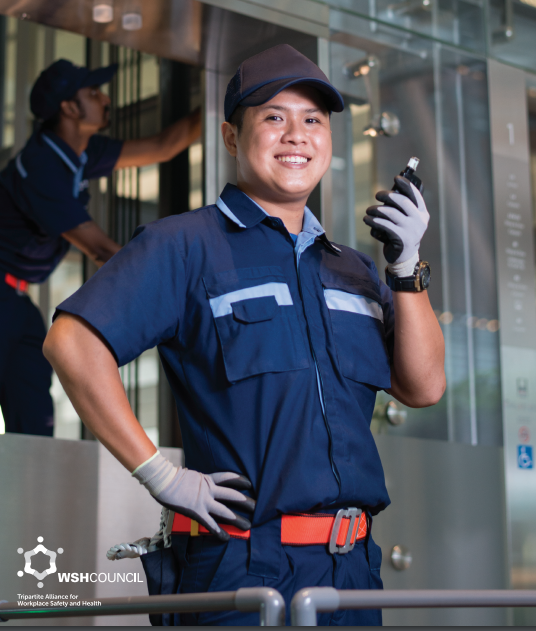
WSH Guidelines on Working Safely During Maintenance of Electric Passenger and Goods Lifts
This comprehensive training course is designed to provide essential knowledge and practical skills for individuals and stakeholders involved in the maintenance of electric passenger and goods lifts. Lifts have become an integral part of daily life in Singapore, where high-rise buildings dominate residential, commercial, and entertainment spaces. With the high demand for vertical transportation, the safe and reliable operation of lifts is crucial. Poorly maintained lifts can not only inconvenience users but also expose maintenance personnel to unnecessary risks. This course focuses on ensuring that lift maintenance is carried out safely, efficiently, and in accordance with legal requirements and industry best practices.
The course covers both routine and non-routine maintenance tasks. Routine maintenance includes vital tasks such as lubrication, cleaning, inspection, and making minor adjustments or alignments. These regular procedures help keep the lifts functioning smoothly and prevent potential malfunctions. On the other hand, non-routine maintenance involves more complex and critical tasks like troubleshooting, emergency repairs, replacing damaged components (e.g., cables, ropes, elevator door parts), and re-calibrating sensors and load cells. This type of work may require special tools and expertise, such as cutting equipment, rigging tools, or heat-generating equipment. Additionally, participants will learn about conducting rescue operations and replacing major components, including the control panel, car, or machine, when necessary.
The training aligns with Singapore’s SS550 Code of Practice for the installation, operation, and maintenance of electric passenger and goods lifts. It emphasizes the importance of compliance with workplace safety regulations and the adoption of best practices to ensure that lift maintenance is conducted without jeopardizing the safety of workers or users.
Participants will also learn about non-lift-related maintenance tasks, such as cleaning the external hoist way or the interior of the lift car, which are not part of the maintenance process covered in this course.
By the end of the training, attendees will have a solid understanding of the key principles of safe lift maintenance, enabling them to perform their duties effectively and confidently. Proper lift maintenance helps to reduce downtime, prevent accidents, and ensure smooth, uninterrupted operation, thus benefiting both the building occupants and the service providers responsible for keeping lifts in optimal working condition. This course is essential for companies and professionals seeking to uphold safety standards and ensure reliable vertical transportation in Singapore’s high-rise environment.
Curriculum
- 0 Sections
- 0 Lessons
- 0 Quizzes
- 0m Duration
Share this Article
This Free Online Course Includes:
✓ Comprehensive Learning Materials
✓ Professional Certificate
✓ Final Assessment
Related Courses
CEOs Guide to Work at Height
Retake Course
Guide to Safe Riding on Motorcycles, Bicycles, PABs, PMDs and PMAs
Retake Course
Guide to Excavation for Trenches
Retake Course
Deleting Course Review
Course Access
This course is password protected. To access it please enter your password below:


